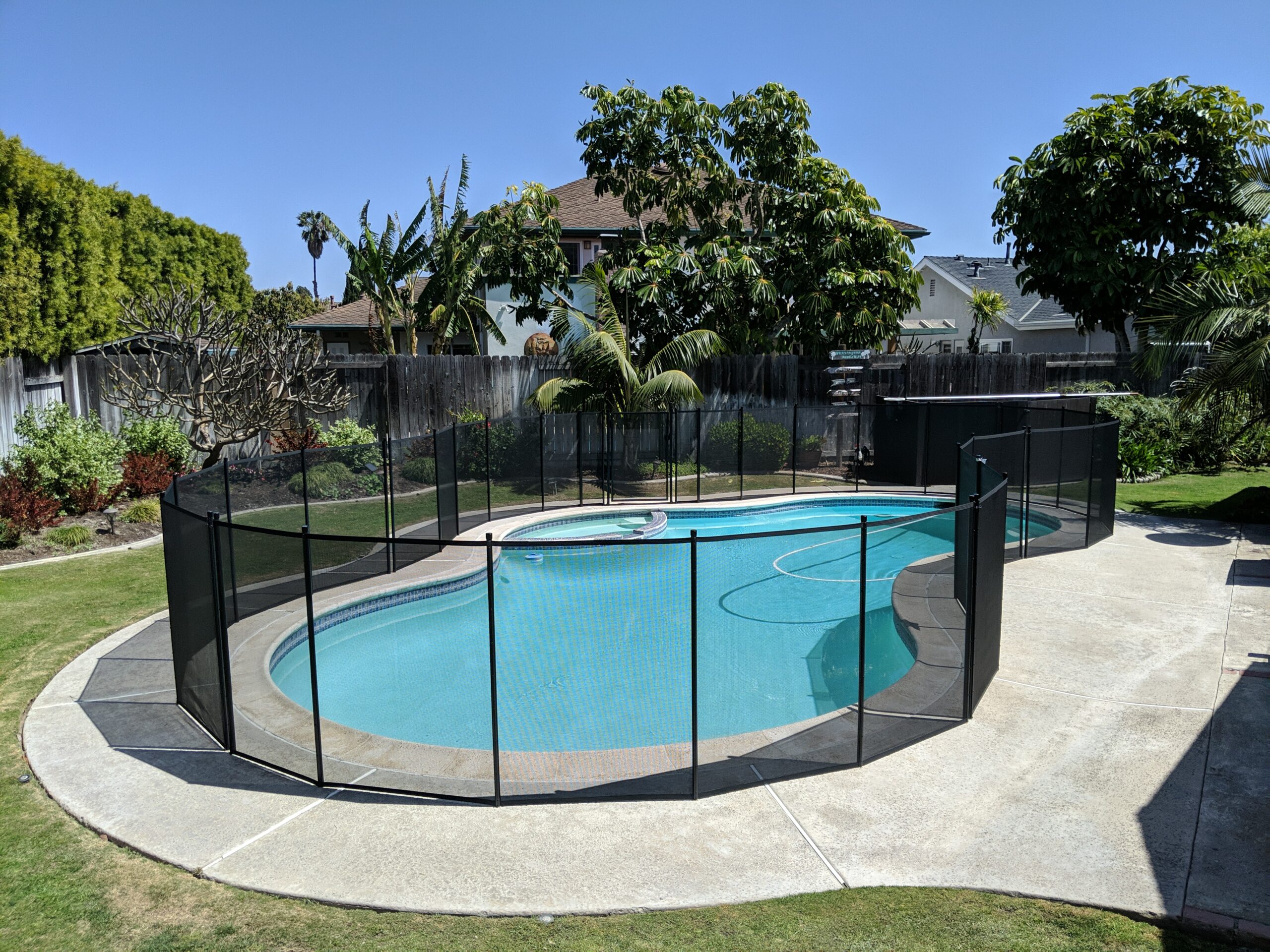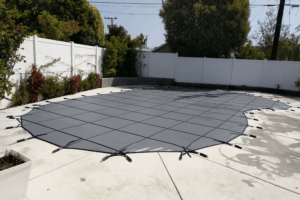
Pool Area Maintenance Tasks You Shouldn’t Skip
Even diligent pool owners miss key maintenance steps. Use this checklist to catch commonly forgotten tasks and keep your pool area safer and more efficient year-round.

We’re passionate about safer swimming pools, and that includes helping you create an energy-efficient pool that’s safer for the environment. All of us are working with finite natural resources. While our kids, grandkids, and neighbors love their swimming pool time, it’s also important to leave a better world in which to pass on the love of swimming we instill in them every day. The good news is that you don’t have to choose between safety and conservation. With the right help from your local All-Safe Pool installer, you can build a pool area that saves you money, has a lower impact on the environment, and protects your loved ones from accidental drownings, which take thousands of lives every year.
Swimming pools use thousands of gallons of water, large amounts of chemicals, and electrical energy that is used to heat, circulate, and filter the water. Combined, this can represent a huge draw on natural resources at a time when all of us are coming to understand the impact of our day-to-day choices on the world around us and its climate. Energy-efficient pools–with features like solar pool covers–help you decrease your pool’s usage of these resources, limiting your environmental impact.
Using fewer resources does more than just impact the environment. It has a positive impact on your bank account. Water, chemicals, and electricity all cost money, and with a swimming pool, those costs are regular, constant expenditures to keep your pool operating. Owners with a pool safety cover have likely already noticed their upkeep costs dropping, but creating an all-around energy-efficient pool can increase your savings even further. That leaves more money in your bank account for better pool parties, vacation planning, or any other family priorities.
Your swimming pool is an artificial environment created in your backyard and maintained by carefully balanced mixtures of water, chemicals, and power. Optimizing their usage is at the heart of creating a more energy-efficient pool.
When it comes to creating a more efficient swimming pool, choosing items that focus on one or more of these three key factors will give you the largest impact, often with the least cost and disruption to your existing pool lifestyle. With a few smart equipment decisions, you will save money, protect the environment, and have the peace of mind that comes from knowing your pool is healthy and safe.
Swimming pool covers directly affect the rate of evaporation of your pool’s water, maintaining both its water volume and chemical balance. Pool covers come in many shapes, sizes, and styles, but not all of them will help you create an energy-efficient pool or help you protect against unsupervised pool access.
This mesh material also helps prevent evaporation by creating a pocket of warm, moist air under the cover. Instead of escaping into the atmosphere, the water condenses and returns to your pool, lowering your need for replacement water volume and more treatment chemicals. It also helps trap heat, reducing the energy required for heated pools to maintain a comfortable temperature.
As an example, our Solar ring system is a flexible solar cover option. Inflatable rings around the outside perimeter keep the covers afloat and protect the water’s surface from evaporation. Even with enough rings to cover the pool’s surface area, they don’t become entanglement hazards that increase the risk of drowning. They’re a smart, cost-effective way to make sure your energy-efficient pool uses less water, power, and chemicals.
Timers are a popular and easy-to-install way of managing energy-intensive pool tasks as efficiently as possible. They let you set these systems to run at a set time, on specific days, for the optimal amount of time to get the job done right without overusing resources. Timers are available for your pool heater, filter pumps, lights, and even chemical management systems. One of the easiest ways to reduce the environmental impact of your pool and make real changes that lead to cost-saving energy efficiency is pool automation which limits your consumption to just what is needed. That’s less water, less power required, and a reduction in chemical overuse while also saving you the time of manually operating and monitoring these systems and processes.
One of the benefits of automation is that it helps you with the third step in creating a more energy-efficient pool: consistent maintenance. It is far easier and more cost-effective to keep a pool healthy than to enter into a repetitive cycle of mitigating issues and restoring a pool to proper functionality and levels. This means making proper maintenance a priority. Keep your water’s chemistry balanced, flush your pool filter medium regularly to keep it operating at peak efficiency, and make sure your pool safety cover stays clean and in good repair.
Your local All-Safe Pool installer is ready to help you protect your pool with a safety cover or install a solar pool cover that fits your needs. Whether you just need increased efficiency or want to add a pool safety barrier to your pool area, they’re ready to tailor a solution to your unique pool. They’ll take measurements, talk to you about your goals, and give you a written estimate that gives you detailed information about your pool’s options. Request your free quote from All-Safe Pool today.

Even diligent pool owners miss key maintenance steps. Use this checklist to catch commonly forgotten tasks and keep your pool area safer and more efficient year-round.

Learn the most common pool winterizing mistakes and how to avoid them for a safer, cleaner backyard during the off-season.

Mesh pool covers offer reliable winter protection by keeping out debris and preventing accidents. Learn why they’re a smart choice for safety and peace of mind.
Enter your zip code to locate an independent installer in your area
Enter your zip code to locate an independent installer in your area

Due to the many variations in monitors, phones, and browsers, color samples and product examples may appear different on different screens. Computers and mobile devices are not all calibrated equally and color reproduction on the Internet is not precise. The same is true for printed items such as brochures and other sales literature.
In addition, the colors of our products photograph differently under different lighting conditions. For example, photos taken in full sunlight will vary from photos taken on a cloudy or overcast day. Similarly, shadows from nearby objects can affect the color and transparency of our products. If a precise color or specific shade is important, please inspect the actual color of your product prior to installation.
Many of our products’ materials are not available through typical stores and vendors and therefore must be custom manufactured specifically for our use. In order to control costs and provide you with the best value possible, our raw materials are produced in large batches and can often take several months to receive. The colors of our materials can, and often do, vary slightly from batch to batch. Although we make every effort to minimize color variations, we cannot be responsible for these differences when they occur. If a precise color or specific shade is important, please inspect the actual color of your product prior to installation.
For example, we use the name “putty” to describe some of our products. Your idea of the color “putty” may be different than someone else’s idea of “putty”. In addition, products may have the same color name but may not be the exact same color. For example, we have different shades of “black”. Please do not order using color names as your only guide. If a precise color or specific shade is important, please inspect the actual color of your product prior to installation.
If it is important that your product be an exact color or shade, it is highly recommended that you inspect the actual product prior to its installation and address any concerns with your local independent installer. Most independent installers do not offer refunds or accept returns due to color variations.